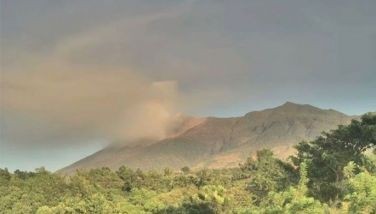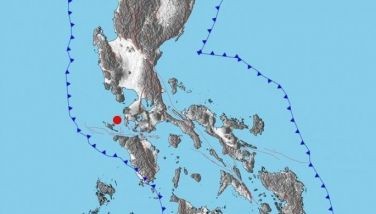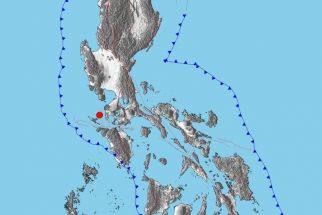Fisherfolk invest in their future
May 15, 2005 | 12:00am
Theirs is a story you’ll find only in movies like Pocohontas, a story too good to be true, a story of men and women who work to protect the environment, while investing in their future.
In a country where fishermen make big money from illegal fishing by using either cyanide or explosives, one man from barangay Macaleeng, Anda, Pangasinan had the vision to realize that such an activity would lead to the extinction of all sea creatures, leaving him with no means to earn a living.
And so after three years of illegal fishing, Bienvenido Caasi, known to his townfolks as Mang Ben, opted to turn his life around and take on the task of educating his fellow fishers of the need to protect the environment, at the risk of losing his huge income and even his own life and limb.
Mang Ben recalled being accustomed to making a lot of money from illegal fishing, coming home with a day’s catch of hundreds of kilos of dynamited fish.
Difficult as things may be, Mang Ben took on a new path and decided to use some of the items he was able to save from all the money he accumulated out of his illegal fishing activities. He used these items as tools to win the support of other fisherfolks to his new cause.
He opted to give away fishing equipment, including fish nets and bamboo rafts to other fishermen, in an effort to convince them to give up illegal fishing and help protect the environment, while ensuring a sustainable level of fish catch.
Mang Ben’s story is just one of many inspiring anecdotes of men and women who opted not to just live for the present, but to think of the future of their children, grandchildren and great grandchildren.
Perhaps moved by stories like that of Mang Ben, the Asian Development Bank, in the early 1990s, funded projects of the Bureau of Fisheries and Aquatic Resources (BFAR) which were aimed at developing the capacity of local officials to help fisherfolk, and train them and their wives, so they may have alternative means of livelihood.
Unlike in many projects that have failed in the past, the Fisheries Resource Management Project drew its success from the efforts of the local residents, particularly the fisherfolk who volunteered their time and services to man the shorelines and sandbars, on the look out for those engaging in cyanide or dynamite fishing activities.
In the late 1990s, ADB again committed to fund another series of coastal resource management project, to sustain the gains from the previous projects.
Supported by funding from ADB and the national government, BFAR has been undertaking programs to train ordinary fisherfolk in using communication equipment and running patrol boats.
Equipped with patrol boats, motorcycles, communication equipment, binoculars and compass units provided by the Japan Bank for International Cooperation (JBIC), fisherfolk band together under the group called Bantay Dagat, to guard against illegal fishing.
Funding from the National Government and the ADB also allowed BFAR to provide the coastal municipalities of Pangasinan and other coastal towns all over the country, with mangrove seedlings. The money also provided for the setting up of mangrove nursery.
Among the success sites is the marine protected area in Bani, Pangasinan, which is currently home to marine life, as well as migratory birds.
As a result of the success of its mangrove reforestation activity, the small town of Bani received a Likas Yaman Award. It now offers tourists a very attractive destination, a bird sanctuary located in its marine protected area.
To augment the fisherfolks’ meager income, BFAR used part of the funding provided by the national government and ADB to train women in deboning milkfish and other local residents in seaweeds culture.
The deboning of milkfish allowed the coastal towns of Pangasinan to churn out a bigger output, since it raises the value of fish harvested in these areas. — PNA
In a country where fishermen make big money from illegal fishing by using either cyanide or explosives, one man from barangay Macaleeng, Anda, Pangasinan had the vision to realize that such an activity would lead to the extinction of all sea creatures, leaving him with no means to earn a living.
And so after three years of illegal fishing, Bienvenido Caasi, known to his townfolks as Mang Ben, opted to turn his life around and take on the task of educating his fellow fishers of the need to protect the environment, at the risk of losing his huge income and even his own life and limb.
Mang Ben recalled being accustomed to making a lot of money from illegal fishing, coming home with a day’s catch of hundreds of kilos of dynamited fish.
Difficult as things may be, Mang Ben took on a new path and decided to use some of the items he was able to save from all the money he accumulated out of his illegal fishing activities. He used these items as tools to win the support of other fisherfolks to his new cause.
He opted to give away fishing equipment, including fish nets and bamboo rafts to other fishermen, in an effort to convince them to give up illegal fishing and help protect the environment, while ensuring a sustainable level of fish catch.
Mang Ben’s story is just one of many inspiring anecdotes of men and women who opted not to just live for the present, but to think of the future of their children, grandchildren and great grandchildren.
Perhaps moved by stories like that of Mang Ben, the Asian Development Bank, in the early 1990s, funded projects of the Bureau of Fisheries and Aquatic Resources (BFAR) which were aimed at developing the capacity of local officials to help fisherfolk, and train them and their wives, so they may have alternative means of livelihood.
Unlike in many projects that have failed in the past, the Fisheries Resource Management Project drew its success from the efforts of the local residents, particularly the fisherfolk who volunteered their time and services to man the shorelines and sandbars, on the look out for those engaging in cyanide or dynamite fishing activities.
In the late 1990s, ADB again committed to fund another series of coastal resource management project, to sustain the gains from the previous projects.
Supported by funding from ADB and the national government, BFAR has been undertaking programs to train ordinary fisherfolk in using communication equipment and running patrol boats.
Equipped with patrol boats, motorcycles, communication equipment, binoculars and compass units provided by the Japan Bank for International Cooperation (JBIC), fisherfolk band together under the group called Bantay Dagat, to guard against illegal fishing.
Funding from the National Government and the ADB also allowed BFAR to provide the coastal municipalities of Pangasinan and other coastal towns all over the country, with mangrove seedlings. The money also provided for the setting up of mangrove nursery.
Among the success sites is the marine protected area in Bani, Pangasinan, which is currently home to marine life, as well as migratory birds.
As a result of the success of its mangrove reforestation activity, the small town of Bani received a Likas Yaman Award. It now offers tourists a very attractive destination, a bird sanctuary located in its marine protected area.
To augment the fisherfolks’ meager income, BFAR used part of the funding provided by the national government and ADB to train women in deboning milkfish and other local residents in seaweeds culture.
The deboning of milkfish allowed the coastal towns of Pangasinan to churn out a bigger output, since it raises the value of fish harvested in these areas. — PNA
BrandSpace Articles
<
>
- Latest
Latest
Latest
May 14, 2024 - 3:43pm
By Ian Laqui | May 14, 2024 - 3:43pm
April 10, 2024 - 5:12pm
By Ian Laqui | April 10, 2024 - 5:12pm
March 4, 2024 - 3:32pm
By Ian Laqui | March 4, 2024 - 3:32pm
March 4, 2024 - 2:12pm
By Kristine Daguno-Bersamina | March 4, 2024 - 2:12pm
February 17, 2024 - 2:31pm
February 17, 2024 - 2:31pm
Recommended




























